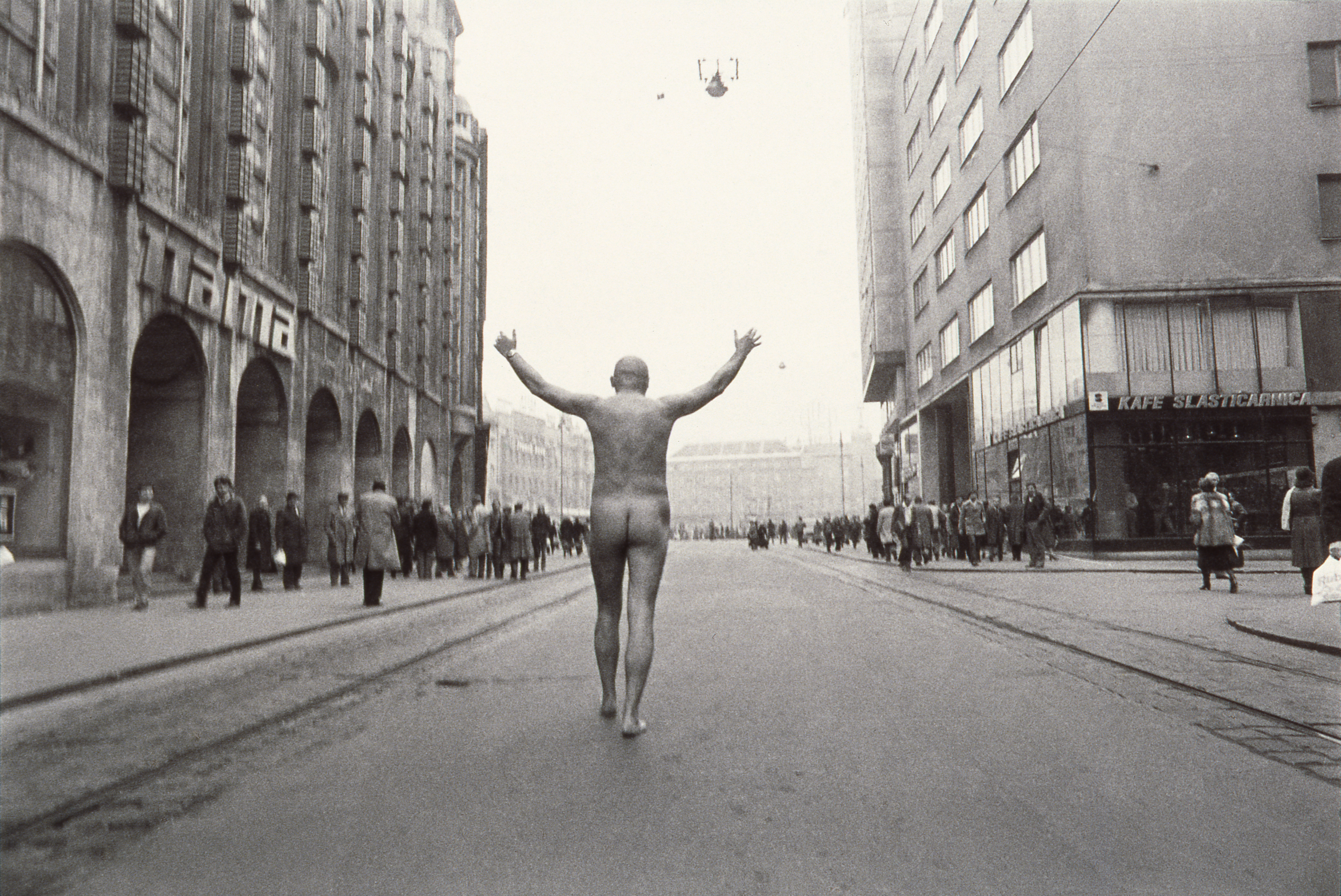The artistic practice of Tomislav Gotovac (Sombor, 1937 – Zagreb, 2010) was marked by wide media diversity: he was a filmmaker and photographer, he made collages, objects and installations, modified his own appearance, staged actions and performances in public spaces, and made provocative media appearances.
Gotovac was born in 1937 in Sombor. His father Ivan was from the Dalmatian highlands, while mother Elizabeta (Beška) came from a Sombor family of German origin. In the summer of 1941, after the beginning of World War II and the dissolution of the Kingdom of Yugoslavia, Gotovac’s family moved to a flat on 29 Krajiška Street in Zagreb. Gotovac’s childhood and adolescence were marked by a strong interest in film. Having finished secondary school, Gotovac began studying architecture in Zagreb, but abandoned his studies after a year. In 1954, he became an active member of Kinoklub [Cineclub] Zagreb, a gathering place of cinephiles and amateur filmmakers. It was then that he produced his first works in the medium of photography (Heads 1960, 1960; Showing Elle Magazine, Breathing the Air, 1962; Posing, Suitcase, The Trio, Hands, 1964). He made his first film in 1962 (Death); the following year saw his manifest documentary-experimental film Forenoon of a Faun. Gotovac filmed his famous trilogy, consisting of Straight Line (Stevens–Duke), Blue Rider (Godard–Art) and Circle (Yutkevich–Count) in Belgrade in 1964. He took part in all editions of the Genre Film Festival (GEFF), held in Zagreb between 1963 and 1970, and received several awards. During 1964 and 1965, he worked intensively on a series of collages inspired by the work of Kurt Schwitters. In 1967, Gotovac enrolled in film directing at the Academy of Theatre, Film, Radio and Television in Belgrade. The event that marked his work in a variety of ways was his participation in Lazar Stojanović’s film Plastic Jesus (1971), where Gotovac was both lead actor and assistant director. Gotovac completed his studies in 1976. That same year, he had his first exhibition at SKC Gallery in Belgrade, where he presented an overview of his fifteen-year artistic practice (photographs, collages, films, documentation of public actions).
Having returned to Zagreb, Gotovac’s presence on the art scene began to increase and he took part in numerous exhibitions in the country and abroad. From 1979 onwards, he did a number of performances in public space, in Zagreb, Belgrade, Osijek, Rijeka and Ljubljana, using public media as an integral part of his artistic practice, initially in student and youth magazines such as Student, Vidici, Studentski list, Polet, and subsequently in top-selling periodicals and TV. These actions and the deliberate manipulation of own character were directly related to his questioning of own identity within the confines of patriarchal society and his attitude of eliminating the boundaries between art and everyday life. In the late 1980s, he began redecorating his parents’ flat on 29 Krajiška Street, using own works and various objects to create an installation. In 2004, he officially changed his name to Antonio G. Lauer, taking his baptismal name and his mother’s maiden name. He worked under this name in the last period of his artistic production, between 2005 and late 2009.
